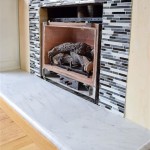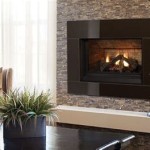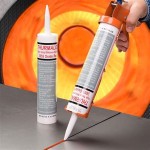Painting Fireplace Stones: A Comprehensive Guide
The fireplace, a focal point in many homes, often features a stone surround that contributes significantly to the room’s aesthetic. Over time, the appearance of these stones may become dated or simply not align with evolving design preferences. Painting fireplace stones offers a cost-effective and relatively straightforward method to revitalize this key architectural element, altering the room's ambiance and enhancing property value. This article provides a detailed guide on painting fireplace stones, covering necessary preparation, paint selection, application techniques, and essential safety considerations. Understanding these aspects ensures a successful and long-lasting transformation.
Preparing Fireplace Stones for Painting
Proper preparation is arguably the most crucial step in achieving a durable and aesthetically pleasing paint finish on fireplace stones. This process involves thorough cleaning, addressing any existing damage, and applying a primer that promotes adhesion and enhances the paint's longevity.
The initial step involves a comprehensive cleaning of the stone surface. Accumulated soot, dust, and grime can significantly impede paint adhesion and create an uneven texture. Using a stiff-bristled brush, scrub the stones thoroughly with a mixture of warm water and a mild detergent. For stubborn stains, especially those related to soot and creosote, a specialized fireplace cleaner may be necessary. Always follow the manufacturer's instructions when using such products, ensuring proper ventilation and protective gear.
After the initial scrubbing, rinse the stones thoroughly with clean water to remove any residual detergent or cleaner. Allow the surface to dry completely before proceeding to the next stage. Drying time can vary depending on the type of stone and ambient conditions. Employing fans or dehumidifiers can expedite the drying process.
Inspection of the stone surface for any cracks, chips, or loose mortar is also essential. These imperfections should be repaired prior to painting to ensure a smooth and structurally sound substrate. Small cracks can be filled with a masonry crack filler, while larger gaps or damaged mortar joints should be repointed using a mortar mix appropriate for the type of stone. Allow the repaired areas to cure completely according to the manufacturer's instructions before proceeding. Failure to address these issues will result in an uneven and potentially unstable paint finish.
Once the cleaning and repairs are complete, the application of a primer is critical. Primer serves several important functions: it seals the porous surface of the stone, creating a uniform base for the paint; it improves paint adhesion, preventing peeling and chipping; and it can block stains from bleeding through the paint layer. Select a high-quality masonry primer specifically designed for use on stone or brick. Apply the primer evenly using a brush, roller, or sprayer, depending on the texture of the stone and personal preference. Allow the primer to dry completely before proceeding to the painting stage, adhering to the recommended drying time specified by the manufacturer.
Selecting the Appropriate Paint for Fireplace Stones
Choosing the right type of paint is paramount to achieving a durable and visually appealing finish on fireplace stones. Not all paints are suitable for masonry surfaces, and using the wrong product can lead to premature failure, including peeling, cracking, and discoloration. Key considerations in paint selection include heat resistance, breathability, and aesthetic properties.
Heat resistance is a particularly important factor, especially for stones directly surrounding the firebox. Standard interior paints are not designed to withstand the high temperatures generated by a fireplace and can release harmful VOCs (Volatile Organic Compounds) when heated. For stones near the firebox opening, high-heat paints specifically formulated for fireplaces or stoves are recommended. These paints are designed to withstand temperatures up to several hundred degrees Fahrenheit without degrading or releasing harmful chemicals.
Breathability refers to the paint’s ability to allow moisture to escape from the stone. Masonry materials are porous and can absorb moisture from the surrounding environment. If the paint layer is not breathable, moisture can become trapped beneath the surface, leading to blistering and peeling. Paints specifically designed for masonry surfaces are typically formulated to be breathable, allowing moisture to escape while preventing water from penetrating from the outside. Acrylic latex paints are generally a good choice for their breathability and durability on masonry surfaces. Avoid using oil-based paints, which can trap moisture and are less flexible, making them prone to cracking.
Aesthetic considerations are also crucial in paint selection. The desired color and finish should complement the overall style of the room. Consider the existing color scheme, furniture, and architectural details when choosing a paint color. Popular choices for fireplace stones include neutral tones such as white, gray, beige, and off-white, which create a clean and modern look. Darker colors, such as charcoal gray or black, can add a dramatic and sophisticated touch. The finish of the paint can also have a significant impact on the overall appearance. Matte finishes tend to be more forgiving of imperfections and create a softer, more natural look. Semi-gloss or gloss finishes are more durable and easier to clean but can highlight surface imperfections.
Before committing to a particular paint, it's advisable to test a small area on the fireplace stones to ensure the color and finish are satisfactory. Apply a small amount of paint to an inconspicuous area and allow it to dry completely. Observe the color under different lighting conditions and assess the overall appearance. This allows for adjustments to be made before applying paint to the entire surface.
Applying Paint to Fireplace Stones: Techniques and Best Practices
The application technique employed directly influences the final appearance and durability of the painted fireplace stones. Careful attention to detail and adherence to best practices are essential for achieving a professional-looking result. This section outlines the recommended techniques for applying paint, including brushwork, rolling, and spraying, along with tips for achieving a smooth and even finish.
Before beginning the painting process, ensure that the surrounding area is adequately protected. Cover the floor, walls, and furniture with drop cloths or plastic sheeting to prevent paint splatters. Use painter's tape to mask off any areas that should not be painted, such as the firebox opening, mantel, or adjacent walls. Proper masking is crucial for achieving clean and crisp edges.
For textured stone surfaces, brushing is often the most effective method for applying paint. Use a high-quality brush with synthetic bristles, as natural bristles can absorb water and become less effective with latex paints. Apply the paint using a stippling motion, working it into the crevices and indentations of the stone. Avoid applying the paint too thickly, as this can lead to runs and drips. Multiple thin coats are preferable to a single thick coat, as they provide better coverage and adhesion.
For smoother stone surfaces, rolling can be a faster and more efficient method for applying paint. Use a roller with a nap appropriate for the texture of the stone. A shorter nap is suitable for smoother surfaces, while a longer nap is better for more textured surfaces. Apply the paint in a consistent and even manner, overlapping each stroke slightly to ensure complete coverage. Avoid applying too much pressure to the roller, as this can cause the paint to squeeze out and create an uneven finish.
Spraying offers the potential for a very even and smooth finish, especially on intricate or highly textured stone surfaces. However, it requires more preparation and skill than brushing or rolling. Use a paint sprayer specifically designed for latex paints and follow the manufacturer's instructions carefully. Thin the paint according to the sprayer's specifications to ensure proper atomization. Apply the paint in light, even coats, overlapping each stroke slightly. Maintain a consistent distance from the stone surface to avoid runs and drips.
Regardless of the application method employed, allow each coat of paint to dry completely before applying the next. Follow the manufacturer's recommended drying time. Applying subsequent coats before the previous coat is dry can lead to adhesion problems and an uneven finish. After applying the final coat, carefully remove the painter's tape while the paint is still slightly wet. This will prevent the paint from peeling away with the tape.
Clean up any paint splatters or drips immediately using a damp cloth. Dispose of used paint containers and brushes properly according to local regulations. Allow the painted fireplace stones to cure completely before using the fireplace. Curing time can vary depending on the type of paint used and ambient conditions. Consult the paint manufacturer's instructions for specific recommendations.

How To Painting The Stone Fireplace White Greige Design

Black Painted Fireplace How To Paint Stone

Painted Fireplace Place Of My Taste

Black Painted Fireplace How To Paint Stone

Stone Fireplace Makeover Part 2 Faux Whitewash Organized Ish

Painted Stone Fireplace Makeover The Little By Home

How To Paint A Stone Or Brick Fireplace Easy Diy Building Bluebird

How To Easily Paint A Stone Fireplace

Give An Old Fireplace New Life With A Modern Coat Of Paint Update Rock Or Bricks Easily And Remodel Painted Fireplaces Stone

How To Paint A Stone Fireplace An Easy Diy Project Allisa Jacobs
Related Posts








